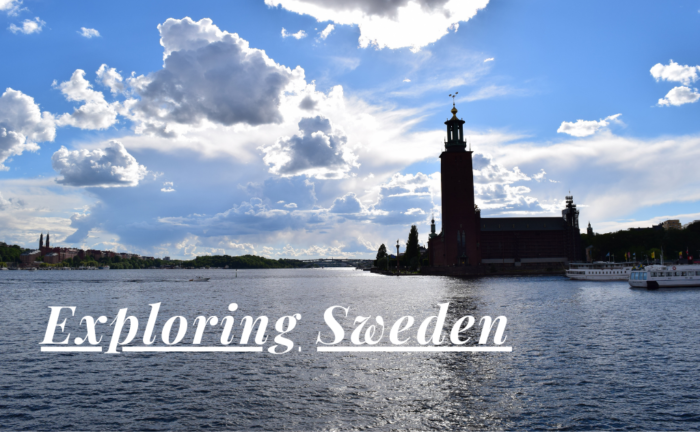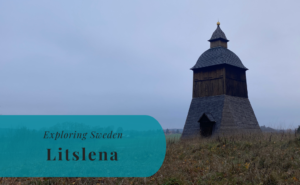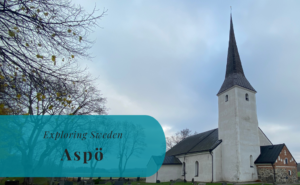Alongside the Swedish Baltic coast, approximately an hour south of Stockholm you find the small town of Nyköping. With a population of around 30.000 inhabitants, it is one of the population centers in the province of Södermanland.
Many know Nyköping as the town close to Stockholm-Skavsta Airport. The airport’s name might be a bit misleading, but it does give any visitor who reads up on the geography a possibility to visit a cozy small town with both a lot of history and nature next door.





A Short History of Nyköping
An earlier name for the town might have been Aros, but the name Nyköping was written on coins as early as the 1230s. It is believed that Nyköping might have received its town privileges as early as 1260. Already in the 13th century, the town had fortifications, a church, a mint that produced coins, and a Franciscan convent. This was a time when Nyköping was an important Swedish harbor in the Baltic Sea trading with for example Lübeck in today’s Germany.
Nyköping Banquet
One of the most famous events in Nyköping’s history took place in December 1317. In Swedish, this event is known as Nyköpings gästabud, the Nyköping Banquet. The Swedish King Birger had invited guests to Christmas celebrations at Nyköping Castle. Among the guests were both his brothers, Duke Valdemar and Duke Erik. The trio had a rough relationship competing for the crown. The banquet didn’t end well for the two brothers as they both ended up in the dungeons of the castle and never left alive. The event would be the start of some troublesome years in Swedish history.
Kalmar Union and the Vasa Era
The castle Nyköpingshus hosted one more important event in the 14th-century-history. It was here at the castle that an agreement was signed in 1396 that opened the possibility to form the Kalmar Union between Denmark, Norway, and Sweden the year after.
The Union survived until the 1520s when Gustav Vasa became King of Sweden. It turned out to be Gustav Vasa’s son Karl, the Duke of Södermanland and later King Karl IX, who initiated a new era of industrialization in Nyköping. Karl established several new industries in the town, including an ironwork, a shipyard, and several sawmills, grinding mills, and forges.
Town Fires and the Russian Pillage
The 17th century saw the town burning twice, first in 1632 and later in 1665. The latter fire also engulfed the castle and the town’s two churches. The castle was only partly rebuilt and some of its stones can today be found in the walls of the royal castle in Stockholm.
The Russian Pillage along the Swedish eastern coast saw many towns and villages burn to the ground. Nyköping joined the same fate as Södertälje and Trosa in 1719 when Russian troops burned most of the town to the ground.
The Industrialization of Nyköping
After the Russian Pillage, several new factories and workshops were established in Nyköping during the 18th century. These included the production of paper, clothes, tobacco, and sugar. It was also a time when many Germans moved to this part of Sweden.
The 19th century saw further development, especially within the production of paper and wrought iron. At the end of the century, factories in Nyköping included Periodens Bomullsspinneri, a cotton spinning factory that was active from 1872 until 1964, and Skandinaviska Glödlampsfabriken that produced lamp bulbs from 1896 until 1976. A company that still is active is Wedholms AB that was founded in 1879 and originally produced milk churns.





Things to Do and See
Strolling around the streets in the center is probably the first thing first-time visitors do when arriving in a town like Nyköping. In this particular city, it is easy to see most of the important sights on foot. One may start at the main street where the small local shops are mixed with the larger ones such as H&M. You know you’re in Sweden when you cannot avoid the red logo of H&M. From there it is not far to Nyköpingshus, the town’s old castle. Just a bit further away is also the harbor.
The Town Center
It is here that you will find several small shops and also a few restaurants and pubs. Several larger shops have nowadays moved away from the center, as in most of Sweden. So there is a lot more space for walking around and enjoying the old small buildings. Along the main street, you will find both the town hall and the church of S:t Nicolai, dating back to medieval times.
Nyköpingshus
Nyköpingshus is a large medieval castle that was one of the most important strongholds in its heyday. To this day the story from the year 1317 is being told, that is the Nyköping Banquet.
Today the castle is slightly more peaceful (the geese and their err… business might bring out the aggressiveness in people) and it is the perfect place for a picnic in the grass along the castle walls. Walking around both inside and outside the castle gives you a feeling of how old it is. It is very worthwhile to enter the museum (it’s free of charge) as you will learn a lot about local and national history.
The Nyköping Harbor
Another cozy place for taking a stroll, enjoying the atmosphere, and maybe have ice cream is the Nyköping Harbor. The area is not very large, but there is enough to see to spend a few hours. At least if you enjoy relaxing with a view of the sea or if you’re looking for a bite to eat.
Stendörren Nature Reserve
Not too far from Nyköping, you find Stendörren, or the Stone Door as it would be called in English. This is probably one of the easiest ways to get to the archipelago without an actual boat. Here you can visit several islands connected by small suspension bridges.
The Stendörren Nature Reserve was established in 1972 and covers an area of 923 hectares in the archipelago. There are multiple hiking paths to be found and places for barbeques, views, and other activities.
Sörmlands Museum
Sörmlands Museum welcomes you with some weird-looking figures at its entrance. This is the main museum, there are actually several smaller museums around Södermanland County that is a part of the Sörmlands Museum.
The museum in Nyköping has several exhibitions, both permanent and temporary. These do all exhibit the objects, photos, and stories that the museum has collected.
F11 Museum
Located at Stockholm-Skavsta Airport, just outside of Nyköping, is the F11 Museum. F11 Nyköping was the name of the Swedish Air Force Wing that had its base at Skavsta between 1984 and 1997.
The museum showcases several aircraft from the Cold War Era. Here you can see Saab’s S29 Tunnan, S32 Lansen, S35 Draken and SF37 Viggen. That is in addition to learning more about the air force wing’s history.





How to Get to Nyköping
There are several means of transportation you can use to get to Nyköping. Buses, trains, and even flights are available.
- Flights: Stockholm-Skavsta Airport (NYO) is just outside the city and it connects Nyköping with several cities around Europe. The carriers that fly here include Ryanair and Wizz Air,
- Car: Nyköping is along the E4 with Norrköping and Linköping to the south and Södertälje and Stockholm to the north.
- Bus: Sörmlandstrafiken has local and regional busses that connect Nyköping with the surrounding region. There are also domestic bus routes that have stops in the town.
- Train: SJ Mälartåg has trains connecting Nyköping with Kolmården and Norrköping to the south and Vagnhärad, Södertälje, and Stockholm to the north.
The driving distance to Nyköping from 5 major Swedish cities, according to Google Maps:
- From Stockholm – 101 kilometers (1 h 8 min)
- From Gothenburg – 370 kilometers (3 h 41 min)
- From Malmö – 517 kilometers (4 h 59 min)
- From Linköping – 100 kilometers (1 h 6 min)
- From Kiruna – 1332 kilometers (14 h 33 min)
Explore More of Södermanland and Sweden


This post was first published 2016-04-24 and was updated 2021-09-05







Great information as usual! I hope you don’t mind I mentioned your blog in a Quora post. https://www.quora.com/How-should-I-spend-my-2-months-holiday-June-and-July-in-Europe/answer/Andrew-MacGregor-5
I really enjoyed this post and your photos are beautiful! Thank you so much for sharing. 🙂